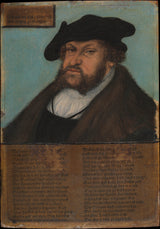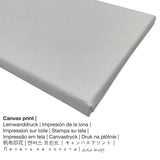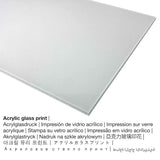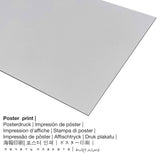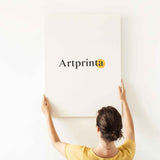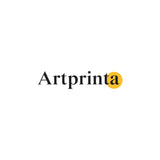Lucas Cranach the Elder and Workshop, 1532 - Johann I (1468-1532), the Constant, Elector of Saxony - stampa d'arte
Tasse incluse. Spedizione calcolata alla cassa.
Che tipo di prodotto artistico presentiamo?
La fine 480 years old artpiece was made by Lucas Cranach the Elder and Workshop in the year 1532. 480 years old artpiece has the size: 8 x 5 cm (5 x 8 20,3/14,3 in). Oil on beech, with letterpress-printed paper labels was applied by the German painter as the technique for the piece of art. The artwork is in the the art collection of Il Metropolitan Museum of Art, che si trova in New York City, New York, Stati Uniti d'America. With courtesy of: The Metropolitan Museum of Art, New York, Gift of Robert Lehman, 1946 (public domain). Creditline of the artwork: Gift of Robert Lehman, 1946. The alignment is in ritratto formato con un rapporto immagine di 1: 1.4, intendendo che la lunghezza è del 29% più corta della larghezza.
Scegli il materiale di stampa fine art desiderato
The product dropdown menu gives you the opportunity to select your prefered size and material. The following options are available for individualization:
- Vetro acrilico stampato: The print on acrylic glass, often named a plexiglass print, will turn your favorite original artwork into beautiful décor. Your favorite work of art will be made with state-of-the-art UV printing technology. The major upside of a plexiglass fine art print is that contrasts plus smaller image details will be exposed due to the granular gradation.
- Stampa poster (materiale tela): The poster is a printed canvas with a slightly roughened surface finish, which reminds the original masterpiece. Please note, that depending on the size of the canvas poster print we add a white margin of approximately 2 - 6cm round about the print in order to facilitate the framing.
- Metallo (stampa dibond alluminio): These are metal prints on aluminium dibond material with a true depth effect, which makes a modern look thanks to a non-reflective surface. For our Print On Aluminum Dibond, we print the selected work of art onto the aluminium surface. The bright & white components of the work of art shine with a silky gloss but without any glare. Colors are luminous, the fine details of the print appear clear and crisp, and there’s a matte appearance you can literally feel. The print on aluminium is one of the most popular entry-level products and is an extremely stylish way to display art reproductions, as it puts 100% of the viewer’s focus on the artwork.
- Stampa su tela: A printed canvas stretched on a wood frame. A canvas generates the extra look of three-dimensionality. The advantage of canvas prints is that they are relatively low in weight, meaning that it is quite simple to hang your Canvas print without the support of extra wall-mounts. Canvas prints are suitable for all kinds of walls.
Disclaimer: We do our best to depict the art products with as many details as we can and to exhibit them visually. Please keep in mind that the tone of the print products, as well as the printing can vary somehwat from the presentation on the screen. Depending on your settings of your screen and the condition of the surface, colors can unfortunately not be printed one hundret percent realistically. In view of the fact that the art reproductions are processed and printed manually, there might as well be minor variations in the exact position and the size of the motif.
Il prodotto
| Stampa la categorizzazione: | stampa artistica |
| Metodo di riproduzione: | riproduzione digitale |
| Tecnica di fabbricazione: | Stampa diretta UV |
| Produzione: | prodotto in Germania |
| Tipo di scorta: | produzione su richiesta |
| Utilizzo del prodotto: | decorazioni per la casa, collezione d'arte (riproduzioni) |
| Orientamento: | formato verticale |
| Dimensioni: | 1: 1.4 (lunghezza: larghezza) |
| Interpretazione delle proporzioni: | la lunghezza è del 29% più corta della larghezza |
| Tessuti di riproduzione disponibili: | stampa su vetro acrilico (con rivestimento in vero vetro), stampa su poster (carta tela), stampa su metallo (dibond in alluminio), stampa su tela |
| Opzioni tela su telaio barella (stampa su tela): | 50 x 70 cm - 20 x 28 ", 100 x 140 cm - 39 x 55" |
| Opzioni di formato della stampa su vetro acrilico (con rivestimento in vero vetro): | 50 x 70 cm - 20 x 28 ", 100 x 140 cm - 39 x 55" |
| Varianti di stampa poster (carta tela): | 50x70cm - 20x28 " |
| Opzioni di formato di stampa su alluminio: | 50 x 70 cm - 20 x 28 ", 100 x 140 cm - 39 x 55" |
| Cornice stampa artistica: | Senza cornice |
Dati grafici strutturati
| Titolo dell'opera: | "Giovanni I (1468-1532), il Costante, elettore di Sassonia" |
| Classificazione: | pittura |
| Classificazione artistica: | arte classica |
| Periodo: | 16th secolo |
| Creato nell'anno: | 1532 |
| Età dell'opera d'arte: | Anni 480 anni |
| Mezzo originale: | olio su faggio, con etichette in carta stampata tipografica |
| Dimensioni originali: | 8 x 5 cm (5 x 8 20,3/14,3 in) |
| Museo / luogo: | Il Metropolitan Museum of Art |
| Ubicazione del museo: | New York City, New York, Stati Uniti d'America |
| Disponibile sotto: | Il Metropolitan Museum of Art |
| Licenza dell'opera d'arte: | dominio pubblico |
| Per gentile concessione di: | Il Metropolitan Museum of Art, New York, Dono di Robert Lehman, 1946 |
| Linea di credito dell'opera d'arte: | Dono di Robert Lehman, 1946 |
Panoramica dell'artista
| Nome dell'artista: | Lucas Cranach il Vecchio e Workshop |
| Genere dell'artista: | maschio |
| Nazionalità dell'artista: | Tedesco |
| professioni: | pittore |
| Paese dell'artista: | Germania |
| Classificazione dell'artista: | vecchio maestro |
| Tutta la vita: | 81 anni |
| Nato nell'anno: | 1472 |
| Morto: | 1553 |
Questo testo è proprietà intellettuale e protetto da copyright ©, Artprinta.com
What does the website of the The Metropolitan Museum of Art say about this artwork from the painter Lucas Cranach the Elder and Workshop? (© - by The Metropolitan Museum of Art - www.metmuseum.org)
Questi ritratti postumi degli elettori sassoni Federico III il Saggio e Giovanni I il Costante appartengono a una serie di sessanta coppie di tali ritratti, ordinati dal figlio e successore di Giovanni I, Giovanni Federico I il Magnanimo, quando divenne elettore nel 1532 Voleva che i ritratti di suo padre e suo zio servissero come strumenti di propaganda. Le poesie elogiative di accompagnamento sottolineano il passaggio della preminenza elettorale sassone da Friedrich a Johann, implicando così la legittimità dell'elettorato di Johann Friedrich. Completata nel 1533, l'ampia serie dimostra la rapidità e l'efficienza di cui era capace l'officina di Cranach.

